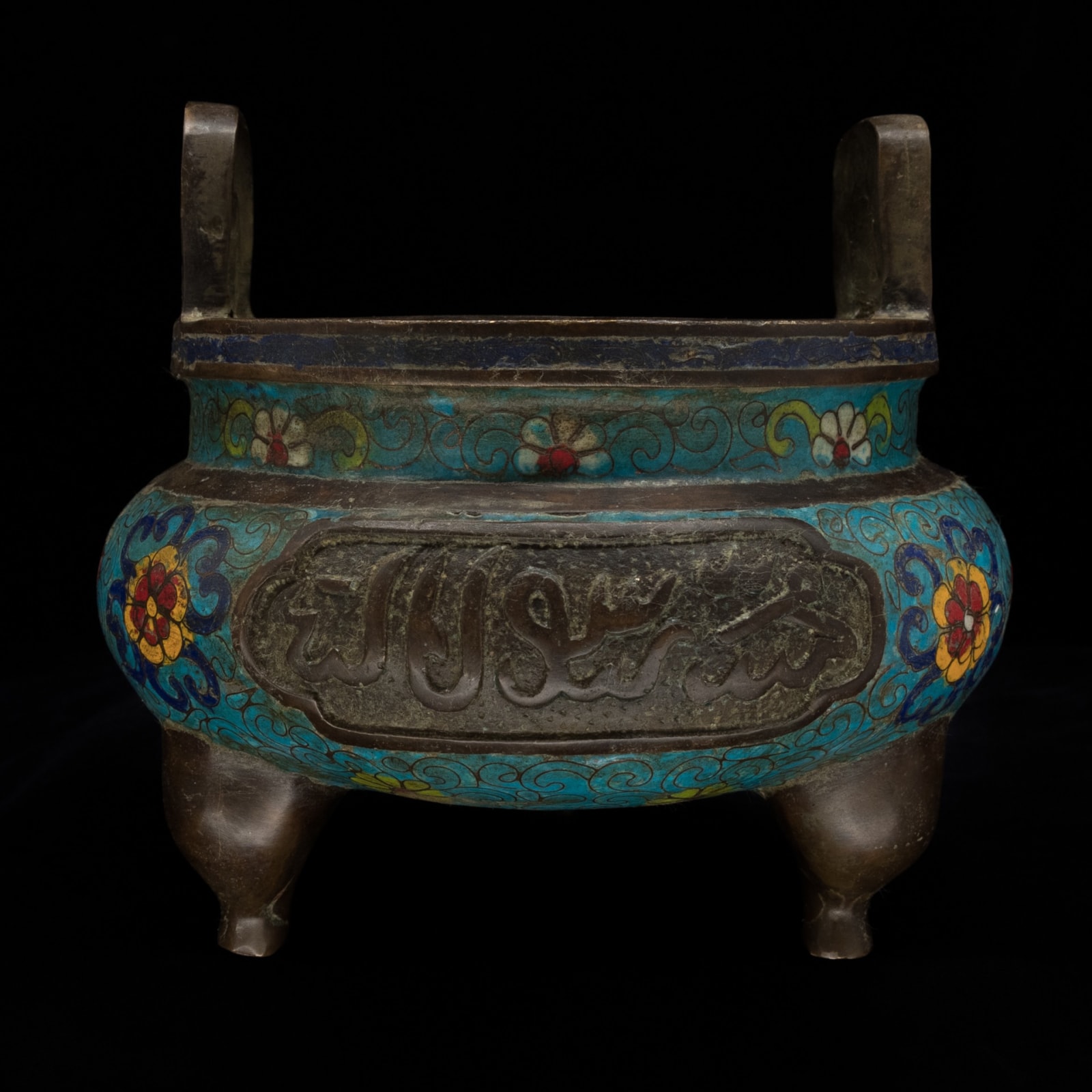Qing Dynasty Cloisonnée Enamel Censer, with Arabic Script, 1644 AD to 1900 AD
Bronze, Gold, Enamel
14 x 15 cm
5 1/2 x 5 7/8 in
5 1/2 x 5 7/8 in
ES.2256
A beautiful Chinese Incense burner dating to the reign of the Xuande Emperor (Ming Dynasty, reigned 1425 to 1435 CE). This incense burner is finely decorated with the cloisonné technique,...
A beautiful Chinese Incense burner dating to the reign of the Xuande Emperor (Ming Dynasty, reigned 1425 to 1435 CE). This incense burner is finely decorated with the cloisonné technique, consisting in decorating metalwork with vitreous enamel. The cloisonné technique flourished in China since the Ming Dynasty, and became a distinctive form of artistic expression for Chinese artist, attesting to the great cultural and technological advancement of Ming and Qing China.
This incense burner stand on three legs and is decorated with floral and vegetal motifs, rendered with vitreous enamel of different colours over a light blue background.
Incense burners were made in China since the Ming Dynasty both for sinicised Muslims in China and for export towards the Islamic states with which China was trading through the Silk Route.
This incense burner stand on three legs and is decorated with floral and vegetal motifs, rendered with vitreous enamel of different colours over a light blue background.
Incense burners were made in China since the Ming Dynasty both for sinicised Muslims in China and for export towards the Islamic states with which China was trading through the Silk Route.
